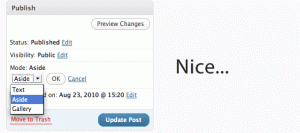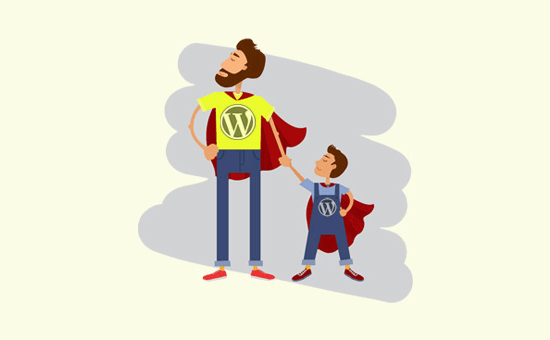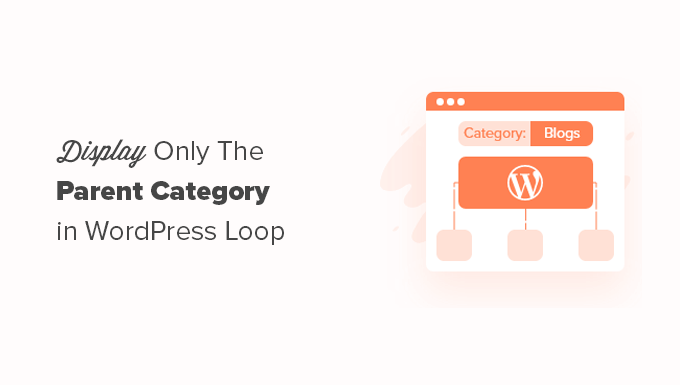Features of WordPress 3.1
We were talking about WordPress 3.0 not long ago, but it appears like we are on our way to WordPress 3.1, based on the development track. According to the scope, the next version will be released in mid-December 2010. There will be some extremely interesting features added, so let’s get started.
Features of WordPress 3.1
The feature freeze is on October 15th, therefore the features listed below are far from complete. In the meanwhile, new features may be introduced, and other ones may be removed. But here’s a general outline of what’s to come:
Internal Referencing
This is one of the most requested additions for version 3.1. Internal linking is critical for WordPress SEO, as we all know. Users will be able to search through their previous blog entries and add links to the material using this new functionality. A button, similar to the external link button, would be added to the post write panel, with a popup similar to the media inclusion button. It will let you search for posts or browse a list of existing content by title, date, author, and other criteria, then choose what to include. It would allow you to enter the text you wished linked, or it might default to the post title. (I’m really looking forward to this new feature.)
The Admin Bar
If you’ve ever used a WordPress.com blog, you’ll know what I’m talking about. An administration bar will be added to WordPress 3.1 to connect the back end to the front end of your blog. This feature is particularly beneficial for multisite users, but it is also handy for single-site users because it enables one-click access to the dashboard, new post form, and other features. The original Viper007Bond admin bar plugin and the new WordPress.com admin bar will be highly influenced. This is the “first step toward a front-end editor,” according to Matt Mullenweg.
![]()
There was some pushback to this being part of the core rather than a plugin. It was suggested as a compromise to make it voluntary. As a result, it’ll almost certainly require activation via your theme’s functions.php file (that would be our guess). We’ll keep you informed as the release date approaches.
Admin Screens with Ajax
This was done as part of “scribu’s” Google Summer of Code 2010 project for WordPress. The goal of this feature is to ajaxify sorting, searching, and pagination by allowing sorting on most columns. In the wp backend, it also introduces a new pagination layout for edit.php pages. When you have a lot of posts on your edit posts page, for example, getting to page 10 needs a few clicks. It will be easier with this new version. It’s referred to as a Hulu-style pagination by Jane Wells. Instead of navigating through the pagination arrows, you will be able to enter the page number in the field and that page will be loaded.
Network Dashboard on its Own
The multi-site dashboard is currently cluttered and confusing. The network dashboard and the site dashboard will be separated by this new functionality. A personal dashboard option was also explored to replace the global dashboard for people who have an account but no site in a multi-site environment. Due to its complexity and time-consuming nature, this feature can be postponed until WordPress 3.2.
Tag for Quick Press Templates
There’s an incredible little feature for Quick Posting, also known as Quick Press, in your WordPress dashboard. This new template element will allow you to utilize it on the front end of your website to create rapid postings. It would be a useful tool for editors who are logged in.
Improved Search and Browsing UI for Installed Themes
The goal is to replace the current user interface (UI) with the WordPress.com UI, which is far more user-friendly. It would be extremely handy for sites with a large number of installed themes, particularly for Multi-Site users who typically have a large number of themes loaded.
Post Styles / Post Templates
This is a much-needed feature that will be offered in WordPress 3.1, as WordPress becomes more of a CMS. Designers and developers would be able to create their own post templates and themes. The purpose of this function is to allow you to designate a post as a specific style, type, or sort. Aside, gallery, link, and quote are some examples of styles. Themes will be able to style these posts appropriately as a result of this. This concept is similar to sticky posts, but it goes a step further because you may now have multiple posts with different styles. The example UI is shown here, but it is not the final version. This is how it would seem in WordPress 3.1.

Queries for Advanced Taxonomy
This isn’t for beginners, but we believe developers would appreciate it. This functionality will make running sophisticated queries much easier. For example, there is currently no way to request posts in the “cars” category that do not have the “BMW” tag. As a result, users are compelled to construct sophisticated category systems in order to imitate numerous taxonomies. For developers who want to push WordPress to its limits, this will make sorting posts and other post kinds a breeze.
Maintenance
There will be bug fixes and interface improvements, as usual. There will also be some minor changes to the Custom Post Types API. A particular note: This is the last version of PHP 4 that will be supported. WordPress 3.2 will only work with PHP versions 5.2 and higher. If your host isn’t already using PHP 5.2, now is the time to start pestering them about it. If you don’t know the version of PHP your host is using, you can use the Health Check plugin to find out. This plugin will tell you what PHP version your server is running.
WordPress 3.1 Release Dates
WordPress 3.1 is expected to be launched by the middle of December, preferably no later than December 15th, to avoid clashing with the holidays. The dates are as follows:
October 15 – Feature freeze; no new features will be introduced after this date, allowing testing on a stable-ish product to begin (including usabilty testing of new features).
November 1st – Primary code freeze; any last tweaks based on testing after feature freeze should be complete by now, and the focus will move to bug fixes in order to reach a stable beta.
November 15 – The beta period begins; no more enhancements will be made after this date; only bug fixes will be made.
The string freezes on December 1st, which is great news for translators.
WordPress 3.1 is released on December 15th.





